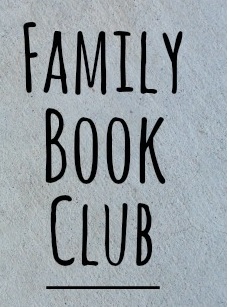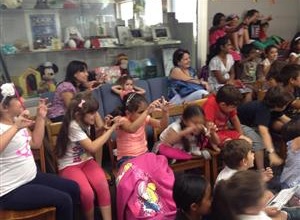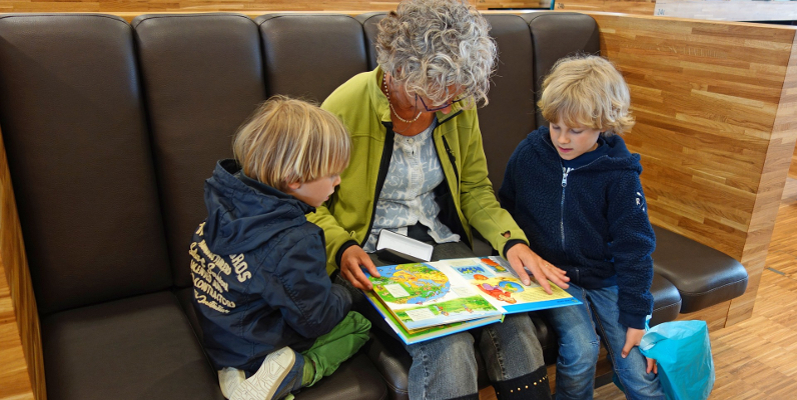My good friend, Melissa Hassell is writing today for That Thing You Do! Melissa has been in the elementary classroom from first to fifth grade and is now an instructional coach on a PreK-6 campus. A couple of years ago, Melissa experimented with a family book club on her campus. I got a chance to attend a session. The work Melissa engaged in with families was innovative and powerful. You can contact Melissa by email: melissahassell@hebisd.edu

Getting students excited about reading can be a huge undertaking. By the time they reach fifth grade, many struggling students have long since checked out. In my classroom I heard “this is to hard” and “I hate reading” on a regular basis. I had to find some way to grab my 5th grade students—especially the students who had given up. After brainstorming with some amazing teacher friends (hat tip to Valinda and Judy), I decided to try a Family Book Club.
I invited all of my students who were interested to join us in the school library once a month with their parent or guardian. Our only goal during this time was to make reading fun. I had door prizes, snacks, and activities.

The activities that I shared with parents ranged from classroom lessons that went really well to short video clips to comprehension Jenga. These activities provided families with ideas on how to make reading fun at home. Modifying games that students already love can turn reading from a chore to fun. I also talked to parents about turning games that kids like to play at home into fun activities:
- write words on cards, tape them to the wall and shoot nerf guns at the words and read them when you hit them
- take board games and write sight words around the playing area, as kids move their spaces they read the words
- the game of Jenga can be used for math facts, sight words, and vocabulary practice
- comprehension questions can be written on card games and students can answer the questions about books they’ve read
- be creative with games your student likes
We had discussions about the books that families had read. They shared with the group what they thought of the books. Sure enough after a couple of months of book club reading started to take off in my room. Some books did not make it back, some bags got lost, but the love of reading was growing in my students.
We ended each meeting by having students choose some books they could read with their parents or siblings. I didn’t care if the book was too hard or too easy. I just wanted them reading. Each family had a bag they could get 3 titles (each title had 2 copies so that parents could take one copy to work and kids could read the other at school or daycare.) One mom took the book to work. She would read at work and then would talk about it with her daughter when she got home. The kids LOVED having something to talk about with their families. They also loved having quality time together.
The Scholastic Kids and Family Reading Report 5th edition writes:
“There are several predictors that children ages 6–17 will be frequent readers. Three dynamics among the most powerful predictors are:
- being more likely to rate themselves as “really enjoying reading”
- a strong belief that reading for fun is important and
- having parents who are frequent readers. (Page 23)”
Addressing each of these components can be difficult for teachers. Families are booked to the max these days. There is barely time for homework, much less reading for fun. Family book club was the way I was able to help students enjoy reading, create a belief that reading for fun was important and also help parents find high interest books to read at home as a family.

One great aspect of family book club was that it did not take a lot of preparation once everything got going. I used books from my classroom library, bought clearance books at Half Priced books, and went to library book sales to get books for families. Each bag had pencils, pens, and paper so that families could do activities with the books.
If you are a teacher who wants to get buy in from your students and their families try a family book club. It can be something big or small and it doesn’t have to cost much money. The book club opened the doors to lifelong readers and great family/school relationships.
–Melissa Hassell









